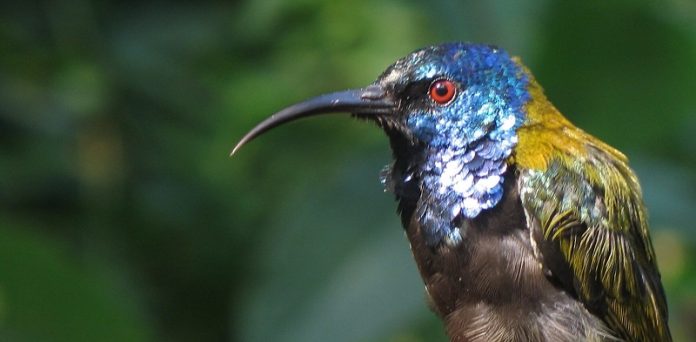
The birds you see in your backyard can be very different depending on where you live.
If you’re far from the Equator, most birds might look pretty plain. But the closer you get to the tropics, the more colorful birds you’ll see.
Scientists have always wondered why there are so many brilliantly-colored birds in the tropics and how they got there.
A recent study in the journal Nature Ecology and Evolution offers some answers. Scientists built a database of 9,409 bird species to study how bird colors spread around the world.
They found that iridescent, colorful feathers appeared 415 times across different bird species, often starting outside the tropics.
Interestingly, they also discovered that the ancestor of all modern birds likely had iridescent feathers.
Chad Eliason, a research scientist at the Field Museum in Chicago and the study’s lead author, explained that scientists have long thought there are more colorful bird species in the tropics. “We wanted to find out how these bright colors got there and how they spread across the bird family tree over time,” he said.
There are two main ways animals get their color: pigments and structures. Pigments are produced by cells and can create colors like black and brown. Structural color, on the other hand, comes from the way light bounces off different cell structures, creating effects like iridescence—the rainbow shimmer you see when light hits an object just right. Tropical birds get their bright colors from a mix of pigments and structural colors. Eliason’s work focused on structural color.
To explore this, Eliason and his team looked at photos, videos, and scientific illustrations of 9,409 bird species, tracking which had iridescent feathers and where they were found. They combined this data with an existing bird family tree based on DNA, using a computer model to figure out how iridescence spread.
The model showed that colorful birds often came to the tropics millions of years ago and then evolved into many different species. Surprisingly, the model also suggested that the ancestor of all modern birds, which lived around 80 million years ago, likely had iridescent feathers.
Birds are a type of dinosaur, with the earliest known bird, Archaeopteryx, living about 140 million years ago. A group of birds called Neornithes evolved 80 million years ago and survived the mass extinction that wiped out other dinosaurs 66 million years ago. All modern birds are part of Neornithes.
“We’ve found fossil evidence of iridescent birds and other feathered dinosaurs before,” Eliason said. “These fossils support our model’s idea that the ancestor of all modern birds was iridescent too.”
This discovery could have important implications for paleontology. “We’re probably going to find a lot more iridescent fossils now that we know to look,” Eliason noted.
While this study explains how iridescence spread through bird species, there are still big questions. “We still don’t know why iridescence evolved in the first place,” Eliason said.
It might help birds attract mates, but it could also be related to the environment or other properties of feathers, like water resistance. Understanding how iridescent birds became so common in the tropics might help us figure out why iridescence evolved at all.



